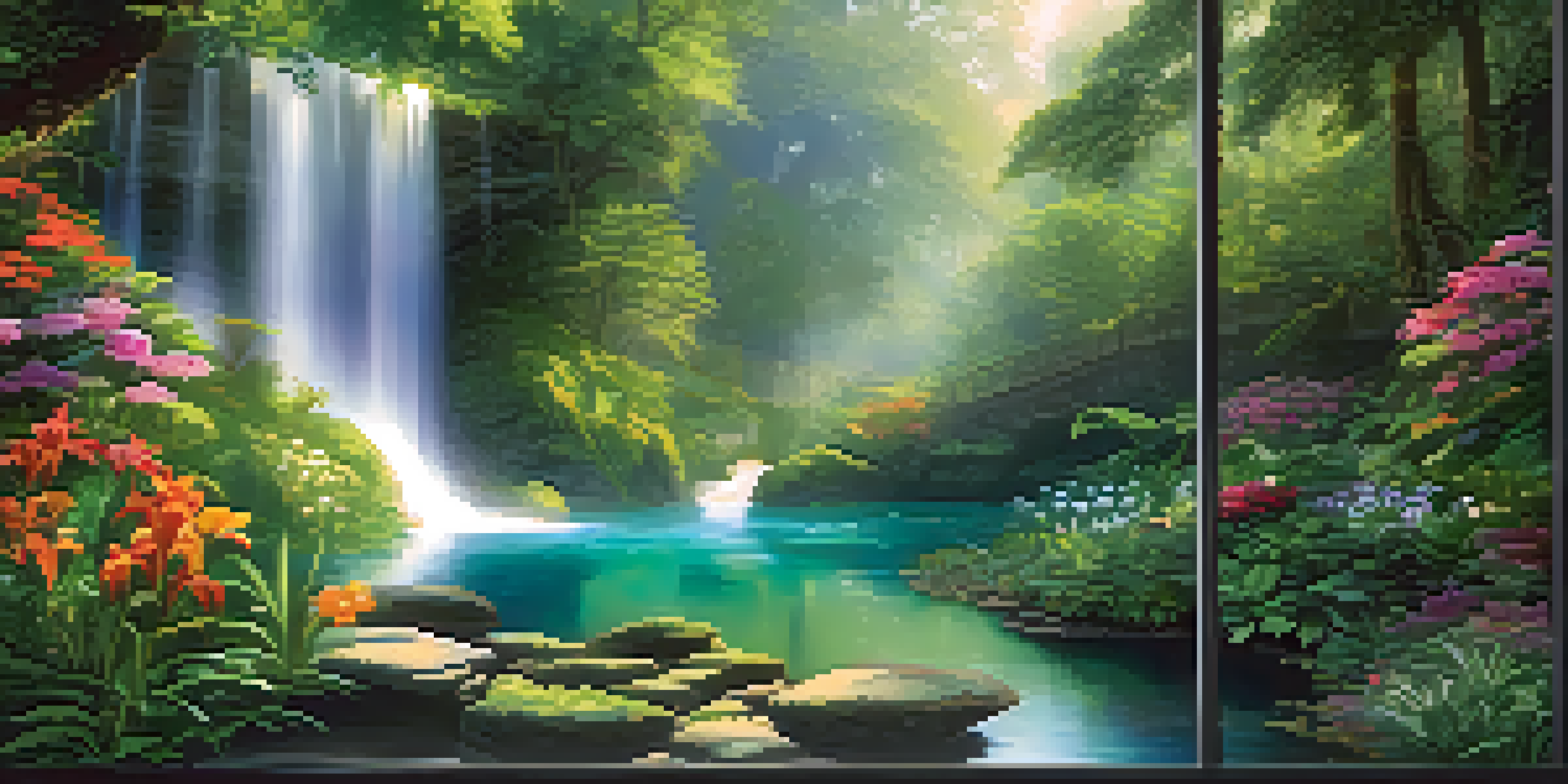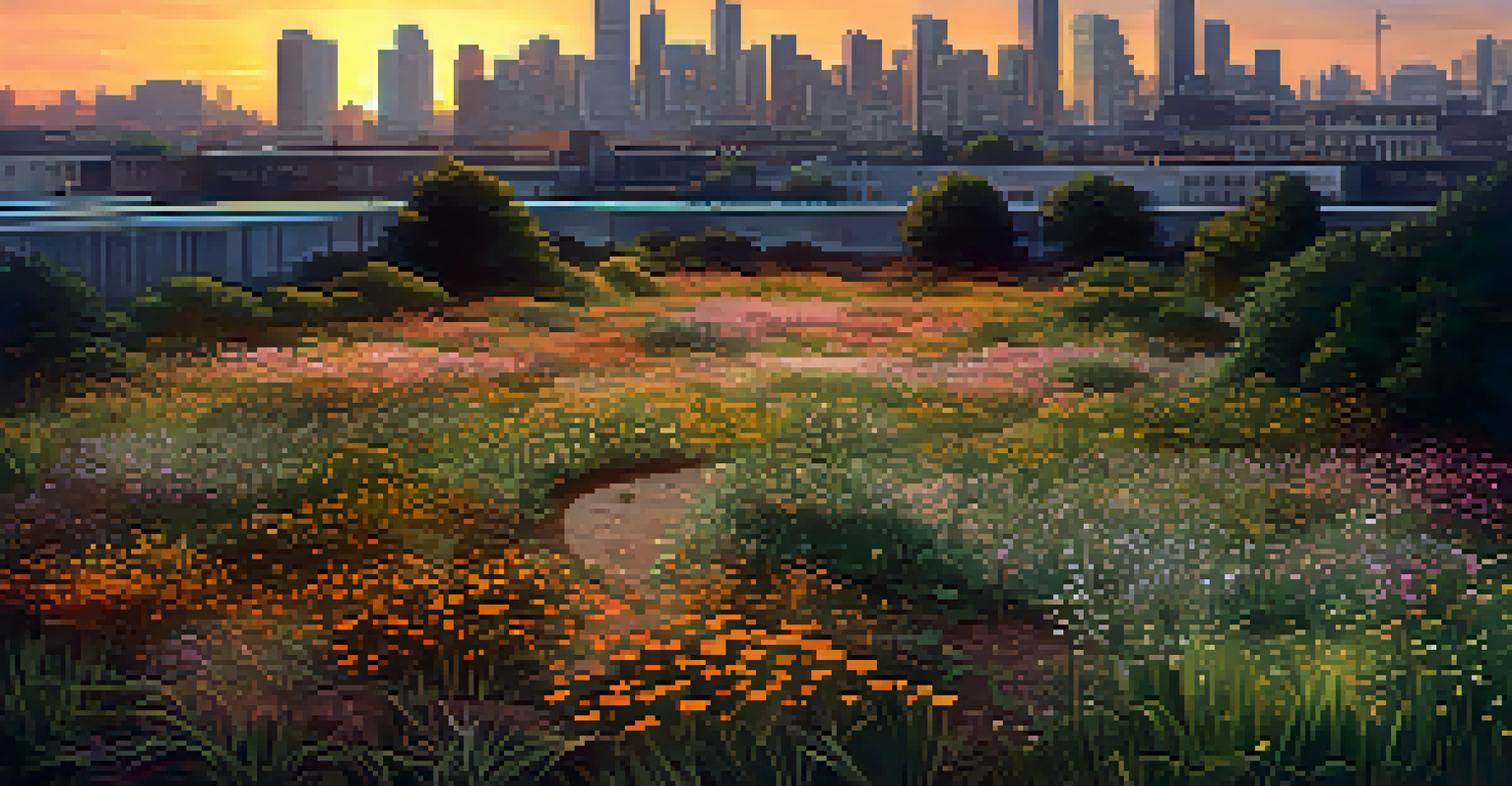Landscapes of Change: Artists Depicting Environmental Degradation

The Role of Art in Environmental Awareness
Art has always been a powerful medium for storytelling, and today, it plays a crucial role in raising awareness about environmental issues. Artists use their creativity to shine a light on the degradation of our natural world, inviting viewers to reflect on the consequences of human actions. By portraying environmental challenges through visual narratives, artists can evoke emotional responses that statistics alone often fail to achieve.
Art is not a mirror to reflect the world, but a hammer with which to shape it.
For instance, installations that incorporate materials like plastic waste can create a shocking visual representation of pollution. This approach not only captivates the audience but also encourages them to think critically about their own consumption habits. Ultimately, art serves as a bridge, connecting complex environmental themes with the everyday experiences of people.
Through powerful imagery and thought-provoking concepts, artists can inspire change and action. Whether it's through paintings, sculptures, or multimedia installations, the art world is uniquely positioned to influence public perception and foster a deeper understanding of our planet's plight.
Artists Leading the Charge Against Climate Change
Several artists have emerged as prominent voices in the fight against climate change, using their platforms to advocate for environmental preservation. One notable example is Olafur Eliasson, whose immersive installations often explore themes of nature and climate. By engaging audiences in a multisensory experience, he encourages them to confront the realities of environmental degradation.

Similarly, Ai Weiwei’s artwork often critiques governmental policies and highlights the impact of pollution and climate change. His thought-provoking pieces, such as the installation made from 100 million porcelain sunflower seeds, challenge viewers to consider the significance of individual actions within larger environmental contexts. These artists not only create stunning visuals but also spark important conversations about our relationship with the earth.
Art as a Tool for Environmental Change
Artists use their creative platforms to raise awareness about environmental issues, evoking emotional responses that drive action.
Through their work, these artists are forging a new path, blending creativity with activism. Their contributions remind us that art can be a powerful tool for social change, urging society to take action against climate issues.
The Impact of Urbanization on Natural Landscapes
Urbanization significantly alters landscapes, and artists are keenly aware of these changes. Many contemporary artists focus on the juxtaposition of nature and urban development, exploring how cities encroach upon natural environments. Through their art, they capture the tension between progress and preservation, often highlighting the loss of green spaces and biodiversity.
The Earth does not belong to us: we belong to the Earth.
For example, the work of artist Gregory Crewdson showcases suburban settings that seem idyllic at first glance but reveal underlying tensions related to environmental decay. By blending the familiar with the uncanny, Crewdson's photographs invite viewers to question the sustainability of urban living. They serve as a reminder that while cities can offer convenience, they come at the cost of our natural surroundings.
Such artistic explorations encourage us to rethink our relationship with urban spaces. As cities continue to expand, the need for sustainable practices becomes paramount, and artists play a vital role in advocating for change.
Nature-Inspired Art: A Call to Action
Nature-inspired art often serves as a poignant reminder of what we stand to lose if we do not take action against environmental degradation. Artists who draw inspiration from the beauty of the natural world elicit a sense of awe, making the threat of its destruction all the more urgent. Their works often depict pristine landscapes, now at risk due to climate change and human activity, which can resonate deeply with audiences.
Take for instance the work of landscape painter Claude Monet, whose vibrant depictions of gardens and waterways remind us of nature's fragility. While his paintings are celebrated for their beauty, they also serve as a historical record of the landscapes that are now under threat. Contemporary artists continue this tradition, using their talents to evoke emotional responses that can motivate people to protect these environments.
Community Art for Local Impact
Community-based art projects empower individuals to express their concerns and advocate for environmental change through collaborative creativity.
By showcasing the splendor of nature, artists not only celebrate its beauty but also call for immediate action to preserve it. Their art serves as a crucial reminder of what we stand to lose if we remain indifferent.
The Power of Community-Based Art Projects
Community-based art projects can have a profound impact on environmental awareness, often fostering collaboration and innovation. These initiatives bring people together, allowing them to express their concerns about local environmental issues through art. By engaging communities in the creation of art, these projects empower individuals to voice their perspectives and advocate for change.
For example, the 'Trash Art' project encourages local communities to create art from recycled materials, transforming waste into meaningful pieces. This not only raises awareness about pollution but also promotes recycling and sustainability practices. Such projects can lead to a greater sense of ownership and responsibility towards the environment.
Furthermore, community art projects can serve as a catalyst for larger environmental movements. By uniting individuals around a common cause, these initiatives can inspire collective action and drive meaningful change.
Using Technology to Amplify Environmental Messages
In today's digital age, artists are leveraging technology to amplify their messages about environmental issues. Through social media, virtual reality, and interactive installations, artists can reach a global audience and foster discussions about sustainability. This digital landscape allows for innovative expressions of environmental themes that engage viewers in new and exciting ways.
For instance, virtual reality experiences can immerse users in environments that are at risk, offering a firsthand glimpse of the consequences of climate change. By making these issues tangible, artists can inspire empathy and urgency in their audience. Similarly, social media campaigns can quickly spread awareness, mobilizing communities around environmental causes.
Technology Amplifies Environmental Messages
Artists are leveraging technology to reach global audiences and foster discussions about sustainability in innovative and engaging ways.
Technology not only enhances the reach of artists but also transforms the way audiences interact with their work. This evolution in artistic expression underscores the importance of merging creativity with technological advancements to address pressing environmental challenges.
The Future of Environmental Art
As environmental challenges continue to grow, the role of art in advocating for change is more important than ever. The future of environmental art lies in its ability to inspire action and foster dialogue. Artists will increasingly explore innovative mediums and approaches to reflect the urgency of climate issues, ensuring that their messages resonate with a diverse audience.
One emerging trend is the integration of science and art, where artists collaborate with scientists to create works that highlight environmental data. This interdisciplinary approach can lead to more impactful storytelling, bridging the gap between scientific research and public understanding. By making complex concepts accessible, artists can engage viewers in meaningful discussions about sustainability.

Ultimately, the future of environmental art is bright and filled with potential. As artists continue to harness their creativity to address pressing issues, they will play a vital role in shaping a more sustainable world.